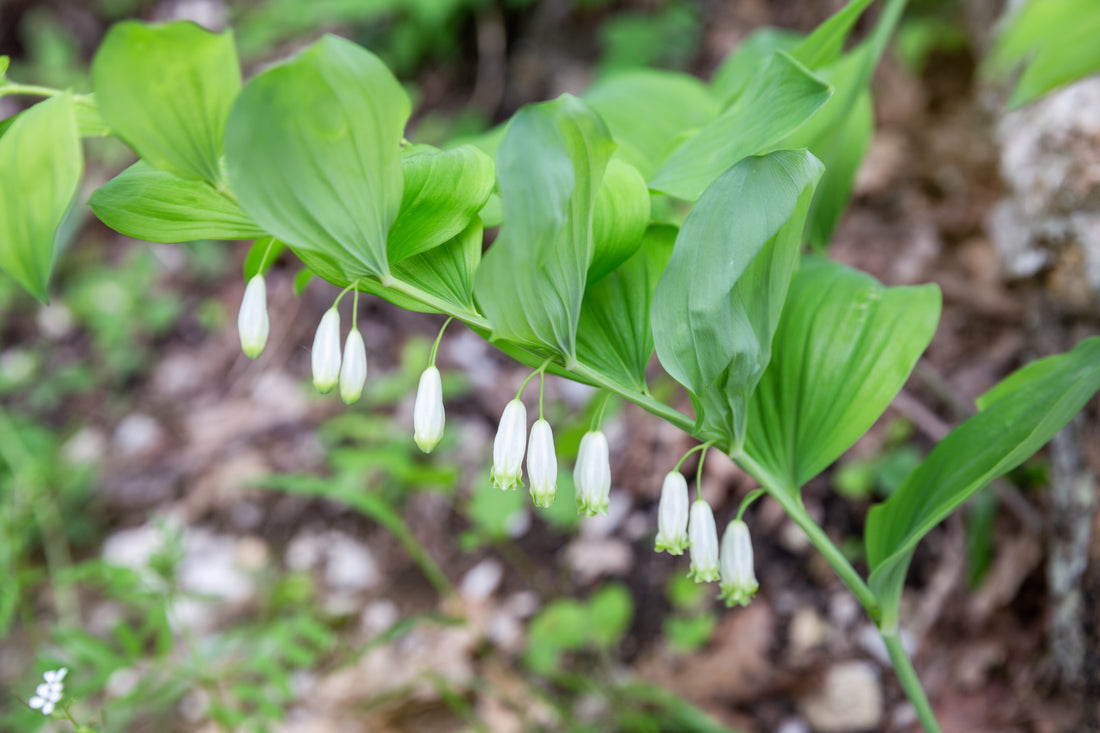
Solomon's Seal Root

Hi Friends,
Here is Brandon-carefully thinning and transplanting Solomon seal rhizomes we have been growing for years by our garden house to a new bed which we prepared last fall. (View here) We covered the bed with a deep layer of our compost ~ this is absolutely luscious soil teeming with countless soil micro-organisms the plants depend upon.
When we first arrived at our woodland home almost 30 years ago, there was an area carved out of the woods that we claimed as garden space. Basically, there was very little topsoil which was then covered with a carpet of intense moss that created masses of wiry roots. Not easy to tame!
After ten years of adding compost and nutritive, organic supplements the microorganisms in the soil seemed pretty happy, herbs and veggies (especially root crops) grew well and we trusted it would continue to improve each year with all the ways we supported the life of the soil. This is reciprocity- the enriched live soil offers us food and medicine, and we are devoted to caring for all the tiny beings that make up the soil.
Solomon seal (Polygonatum biflorum) grows wild in our local woodlands, but plants are quite small. We prefer to leave these wild ones in their chosen home. Instead of wild-crafting this precious beauty, we plant a sub-species of Solomon seal (Polygonatum biflorum var. commutatum) that has larger rhizomes and thrives in semi-shade. I love the graceful curve of its stem that holds pairs of cream-colored bells hummingbirds love to visit. It is easy to harvest the rhizome for extract or to dry for tea without reducing the plant population. (Look for our short video on how to do this.)
Ever grateful for the medicine and beauty of the woodland herbs of the Northeast, we have chosen to nurture and grow these loved ones, tending them in our shady gardens rather than taking them from the wild. Occasionally we do an herb rescue, if the town road crew will be disrupting the places some native herbs grow. In this case we find homes for the disrupted plants~ Trillium, Spikenard and Blue Cohosh are examples.
For those of you readers who are interested in growing some of our at-risk herbs on your land, please purchase your starts from a nursery that is known for cultivating the wild ones instead of digging them up from their woodland homes. Below is a short list of nurseries in New England and New York. Also, please visit United Plant Savers – a fabulous organization that is https://unitedplantsavers.org/.
This team has been helping to bring awareness and education about at-risk plants/herbs as well as devoting themselves to the protection of native medicinal plants, fungi and their habitats to ensure healthy populations of these extraordinary plants for the generations to come! This year, they are celebrating 30 years of tending these amazing plants who have been tending us humans for a long, long time.
Gratitude to you dear reader and gardener~ may your gardens in the woods and under the sun thrive and bring you joy!
Love,
Kate.
Resources:
- United Plant Savers: Nursery Directory- (quite extensive!) https://unitedplantsavers.org/319-2012-nursery-directory/
- Amanda’s Native Garden – Livingston County NY: https://www.amandasnativeplants.com/onlinestore
- Northeast Pollinator Plants in Vermont: https://www.northeastpollinator.com
